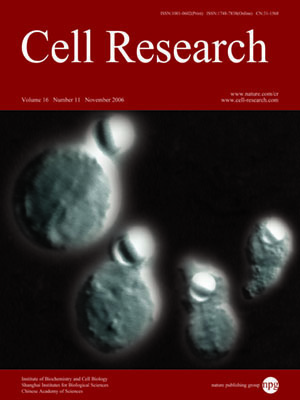
Volume 16, No 11, Nov 2006
ISSN: 1001-0602
EISSN: 1748-7838 2018
impact factor 17.848*
(Clarivate Analytics, 2019)
Volume 16 Issue 11, November 2006: 872-878
REVIEWS
Hemicentins: What have we learned from worms?
Bruce E Vogel, Joaquin M Muriel, Chun Dong, Xuehong Xu
Program in Cell Structure and Development, Medical Biotechnology Center, University of Maryland Biotechnology Institute, 725 W. Lombard St., Baltimore, MD 21201, USA
Correspondence: Bruce E Vogel(vogel@umbi.umd.edu)
Hemicentins are conserved extracellular matrix proteins discovered in Caenorhabditis elegans, with orthologs in all vertebrate species including human and mouse. Hemicentins share a single, highly conserved amino-terminal von Willebrand A domain, followed by a long (>40) stretch of immunoglobulin repeats, multiple tandem epidermal growth factors and a fibulin-like carboxy-terminal module. C. elegans has a single hemicentin gene that has pleiotropic functions in transient cell contacts that are required for cell migration and basement membrane invasion and in stable contacts at hemidesmosome-mediated cell junctions and elastic fiber-like structures. Here, we summarize what is known about the function of hemicentin in C. elegans and discuss implications for hemicentin function in other species.
Cell Research (2006) 16:872-878. doi:10.1038/sj.cr.7310110; published online 10 October 2006
FULL TEXT | PDF
Browse 1982


